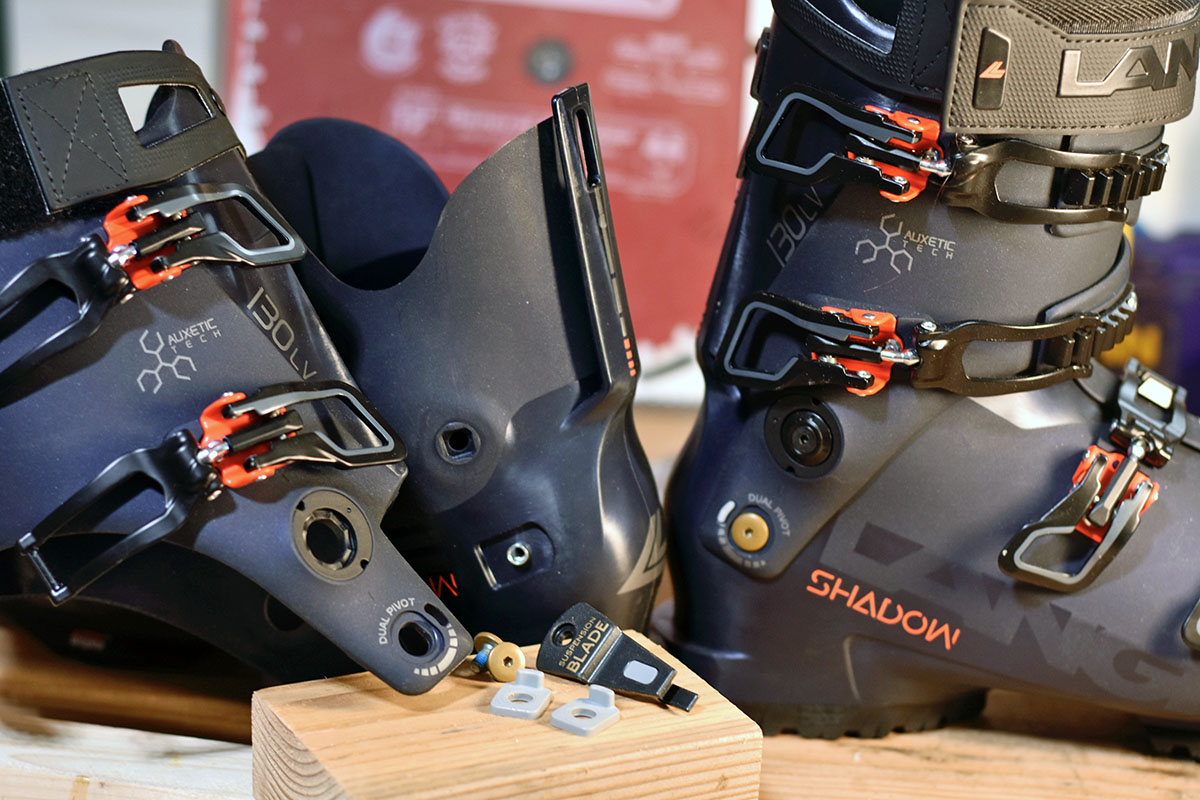
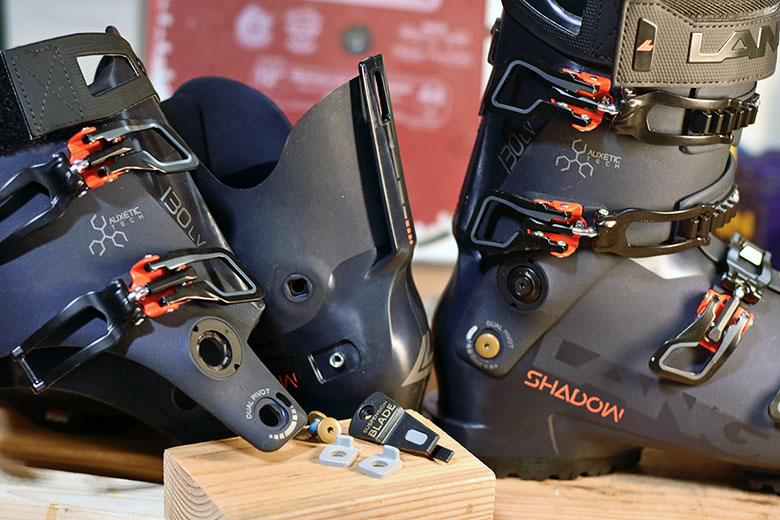
Matt Leitzinger


Matt Leitzinger
With the introduction of the 2024 Shadow line of boots as their new flagship all-mountain and piste model, Lange is making some radical claims about what their machinery offers in a market that’s been technologically static for years. Their claim, in short, is that this re-thinking of the traditional two-piece alpine ski boot offers mechanical advantage toward flexing and driving a ski. In other words: less energy in, more skiing out. Armchair engineer that I am (and with a slow start to the season here in the PNW), I had to take a closer look at what makes this boot tick.
What sets the Lange Shadow apart from its competitors comes down to two unique features: the Dual Pivot and the Suspension Blade. The former is an additional bolted contact point below the traditional ankle pivot that provides a second connection between the upper and lower shell, using an elastomeric bushing to buffer the forces exerted. This additional contact point effectively turns the ankle pivot into the fulcrum of a lever and itself becomes the load or working arm to the upper cuff’s input/effort arm, all while adding a layer of shock absorption.
The Suspension Blade contributes to this same leverage enhancement by adding another interaction point high on the spine of the boot where a strut of plastic from the lower shell is coupled to the upper cuff by another elastomeric bushing. In both cases, the bushing adds a degree of flex and movement control to the boot in a manner completely new-to-market and unique to this design.
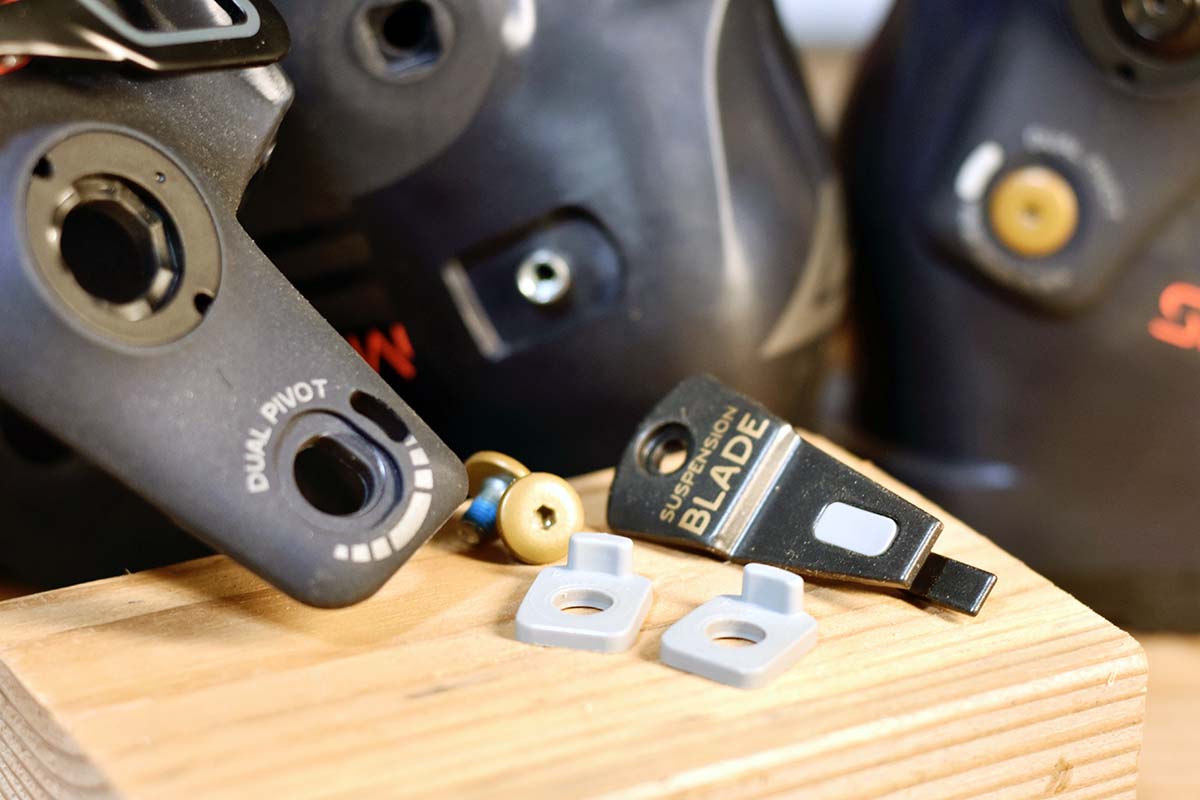
I haven’t skied this boot yet and I can’t speak to the technology’s on-snow performance, but my living-room tests can confirm a unique feel to the flex profile of this boot. Lange’s own marketing team has their descriptions of the technology, which can be found in a video illustration here. I did my best to understand the mechanisms behind this development, and I’ll do my best to illustrate that understanding here.
Traditional two-piece alpine ski boots like the Shadow’s own predecessors rely on a very simple mechanism to transmit energy into a ski, flexing it into a smooth carving arc. An upper cuff is coupled to a lower shell at a single hinge point and the action of that hinge is controlled only by the shell’s own resistance to plastic deformation. Essentially, the upper cuff is a Class 1 lever exerting force on the malleable plastic of the lower shell. Up until now, the only variation in performance across the market has come from augmenting the density and dynamics of plastic with two goals in mind: keeping the boot laterally stiff and providing the feeling of spring-like suspension in the forward-flexing axis.
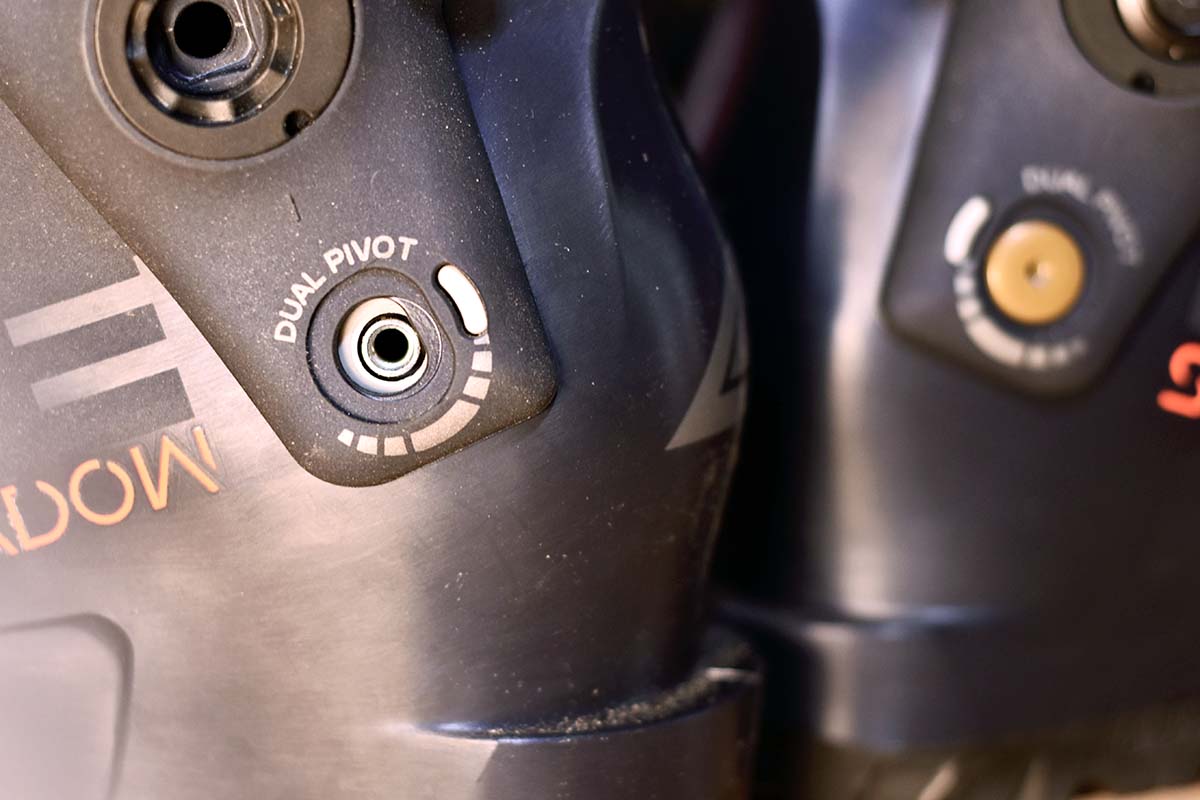
The Shadow’s addition of a new contact point below this traditional hinge point functions less as a pivot and more as a lever—or rather, two of them. Rather than the singular Class 1 lever arm of old, the dual pivot arms become the load arms exerting force on the lower shell as the upper cuff drives forward on its fulcrum of the ankle pivot. The energy exerted here is brokered by a softer, springier plastic bushing which surrounds the coupling bolt; the shape of this housing (seen in the photo above) is intended to prevent rearward deflection (keeping the skier out of the back seat) while adding a dampening effect that will soften the skier’s meeting with either end of the boot’s range of motion.
Lange likens the technology to the linkages seen between the frame triangles of modern mountain bikes, and I believe this cushioning effect is what they’re getting at with that comparison. I’d add the analogy of a crowbar: when the bushing is fully compressed, the linkage bolt applies a lifting force to the lower shell, helping pull the ski into a flexed position. This boosted force is the mechanical advantage that Lange refers to as the “Performance Assisted System.”
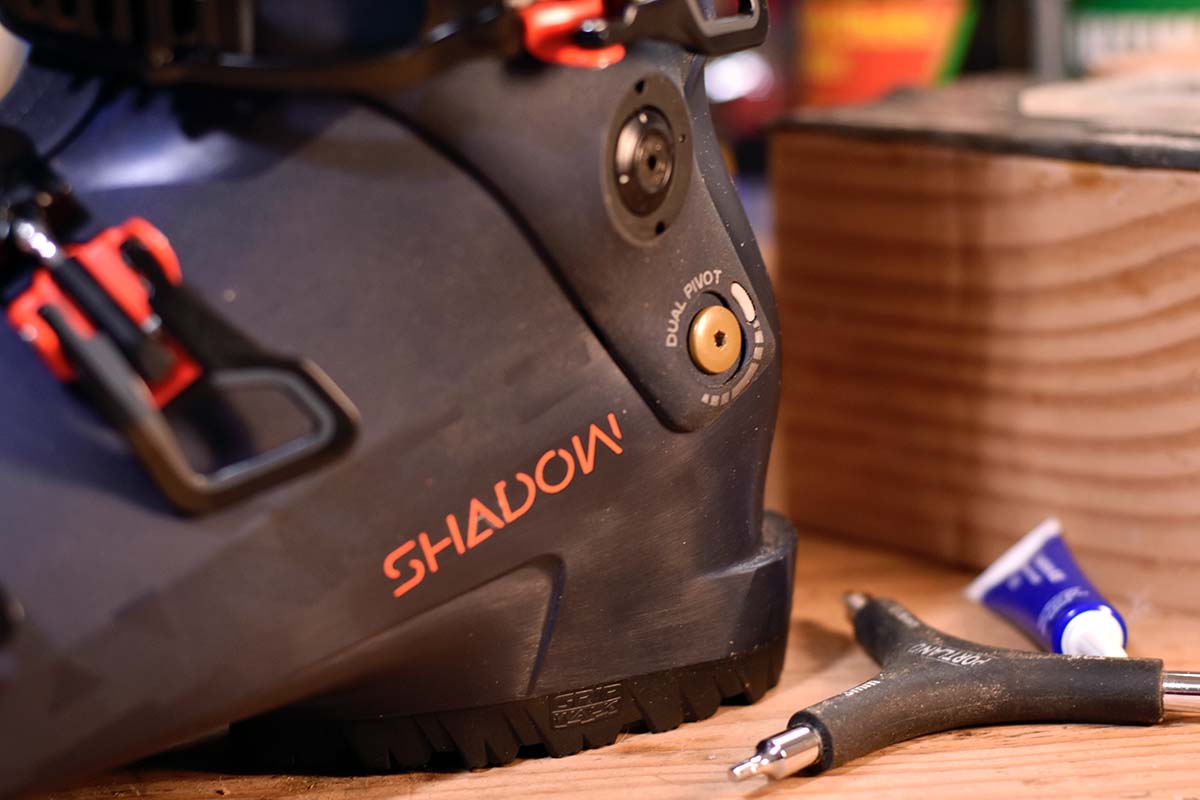
Whether or not the additional leverage is perceptible, undeniable results of this technology are the lateral stiffening without sacrifice of forward mobility and the introduction of a new mechanism of adjustability. The lower struts may also function to limit unwanted lateral deflection by acting as outriggers of sorts. In this way, the boot is easier to drive forward without making sacrifices in the overall integrity of the plastic. This suspension effect is further made adjustable through Lange’s inclusion of alternative bushings with varying durometer (elasticity) that allow the skier to play around with different flex profiles and fine tune the personality of their boot.
Once again separating the Shadow from the remainder of the market is this spine of plastic that extends from the heel-bulge of the lower shell and integrates with a groove in the rear of the upper shell. In the case of the classic two-piece shell, the upper shell overlaps the lower entirely, interacting only with a tongue of plastic that resists the forward motion of the cuff. This resistance, and the tuning of it, constitutes most of the flex profile and personality of a boot. The result is either a soft boot that folds until it buckles and deforms, or an unforgivingly stiff boot that flexes “progressively” until an absolute shin-bruising wall is reached. In the case of the Shadow, the addition of this central and external spine not only enhances the amount of force applied by the upper cuff, but also aids in directing that force straight into the carving ski. The result, in theory, is a boot that is supple to engage yet uncompromising and still forgiving when pushing it to its top end.
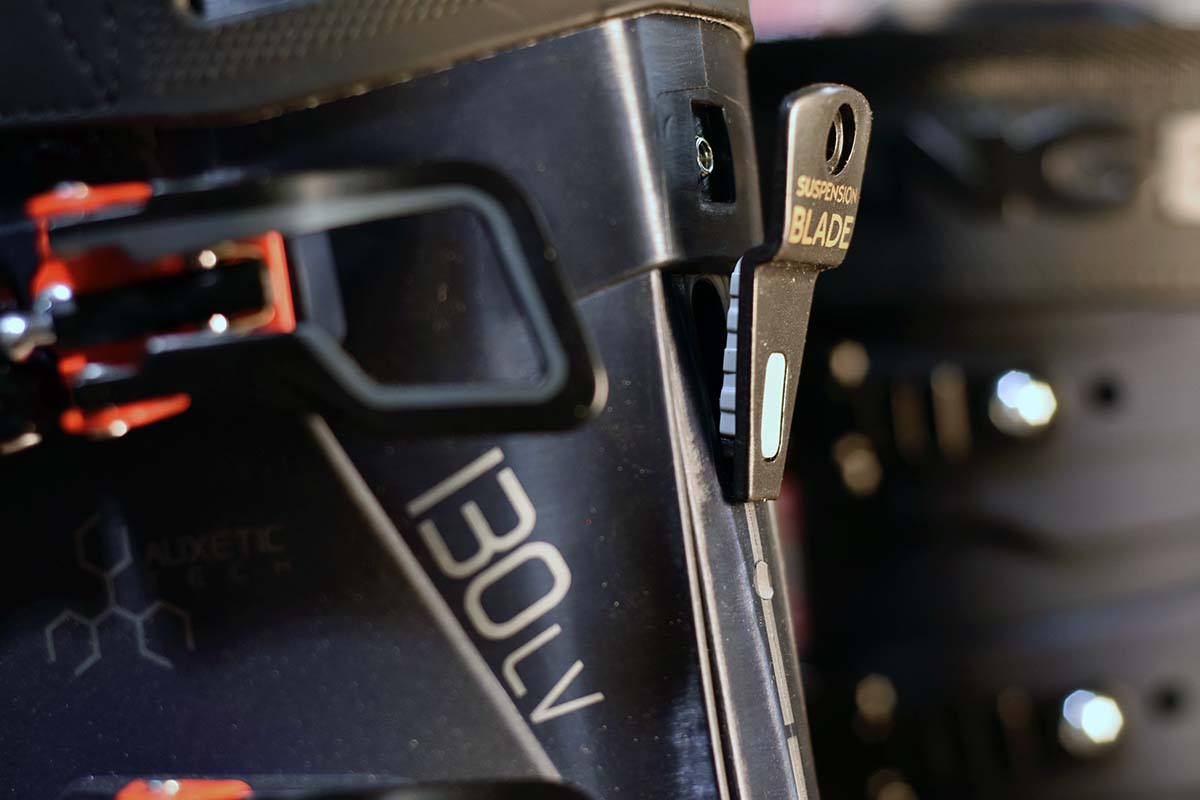
The Shadow’s Suspension Blade employs the same adjustable-durometer bushing technology seen in the Dual Pivot, adding another point where users can customize the boot’s flexibility. The attachment of this bushing is arranged so that the spine will not deflect backwards and resistance will ramp up with forward movement.
The interlocking nature of the Suspension Blade prevents any rearward flexion of the boot spine, while also providing an unprecedentedly high attachment point between upper and lower shells. This high coupling (long lever) employs the same type of adjustable-durometer bushing seen in the Dual Pivot, lending another element of shock absorption and adding another point where users can customize the boot’s flexibility.
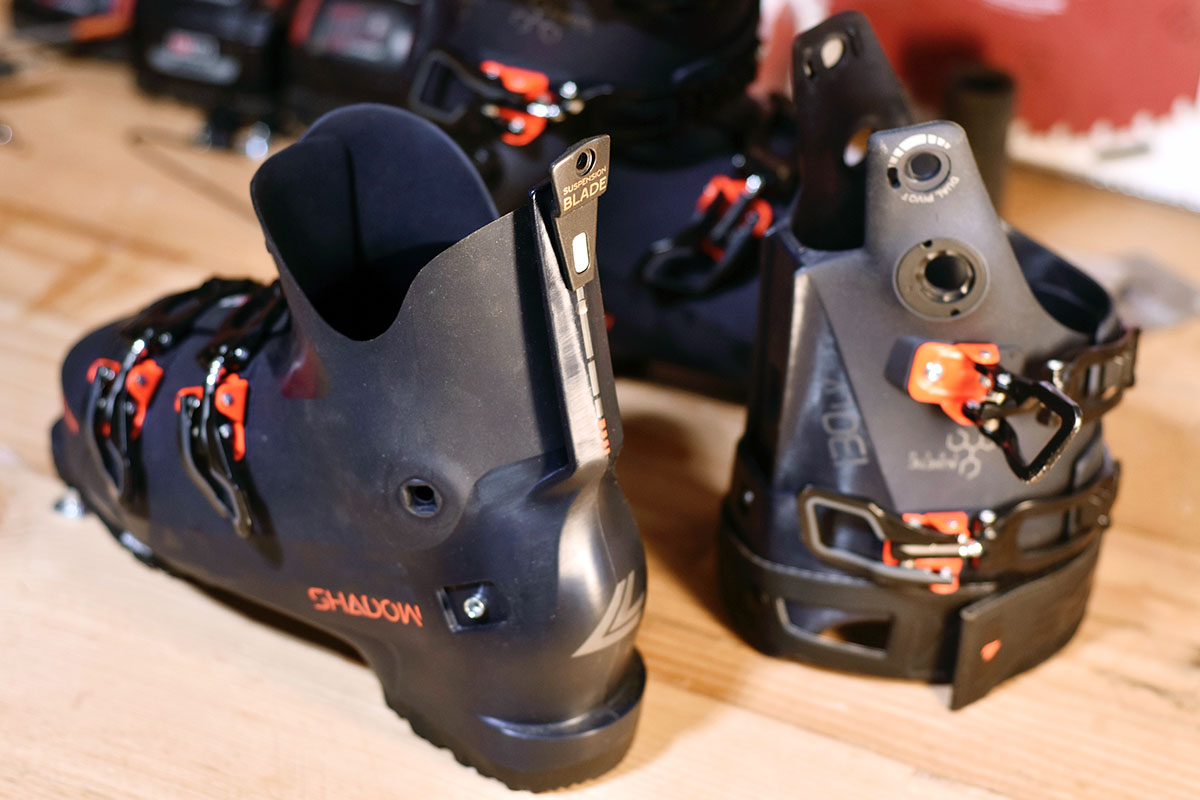
While it remains to be seen whether these new technologies will amount to the revolutionary claims being made, Lange has objectively and undeniably made some unique improvements on a tried-and-true design. It’s mechanistically visible that these augmentations should assist in the general goals of a ski boot—lateral stiffness and predictable and graduated flex in the forward axis. I’m excited to play around with the novel addition of bushing customization and put to a thorough test the durability of these additional moving parts.
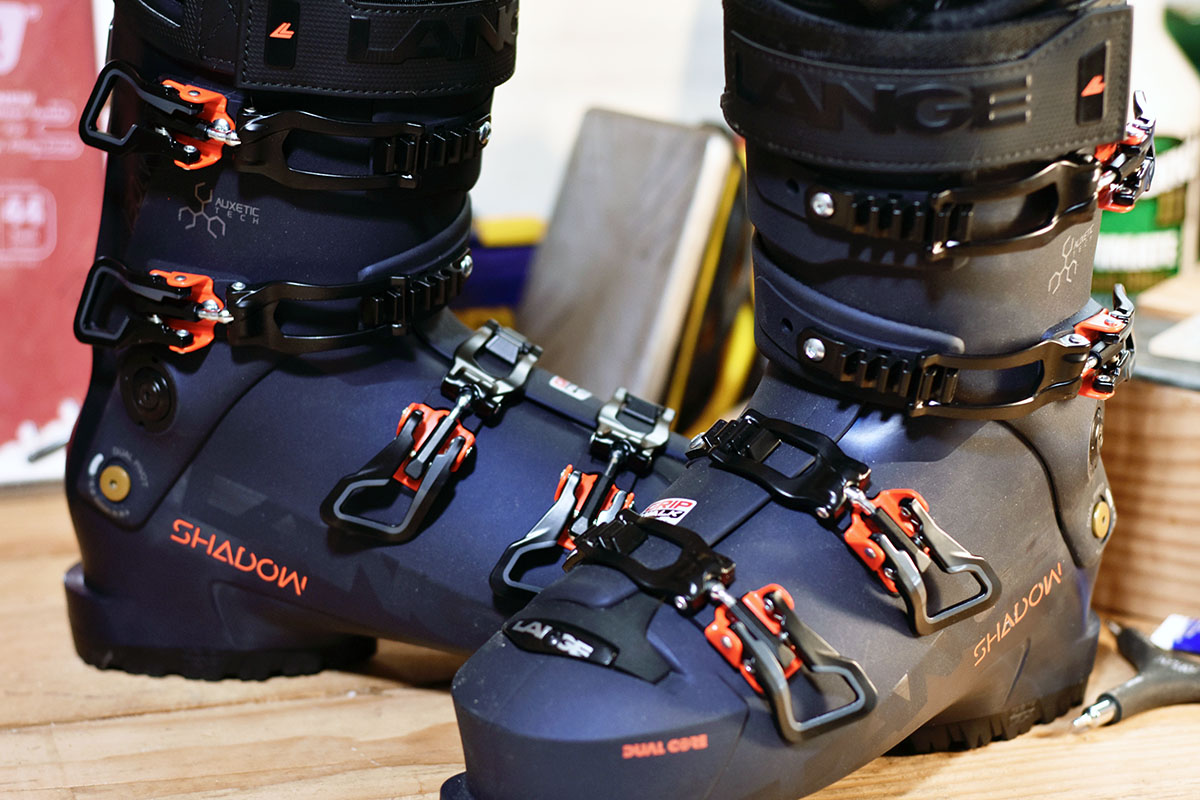
I hope you’ve enjoyed this bored ski-tech’s deep dive into the new technologies offered in Lange’s new line of resort-ripping alpine boots. Keep an eye out for my comprehensive review of the fit, function, and on-snow performance of the Shadow 130 LV coming later this year. Fingers crossed and twinkies roasting for more snow soon.